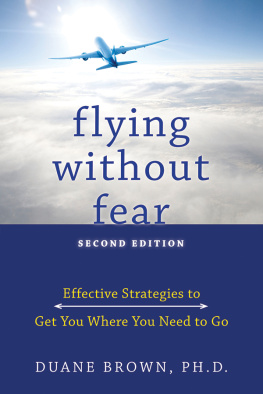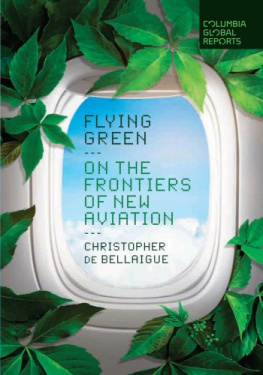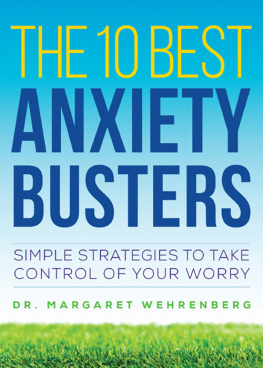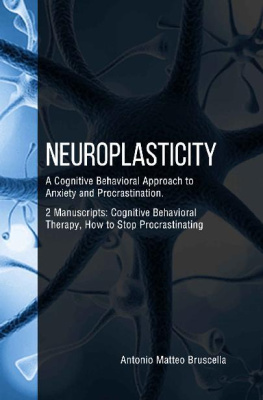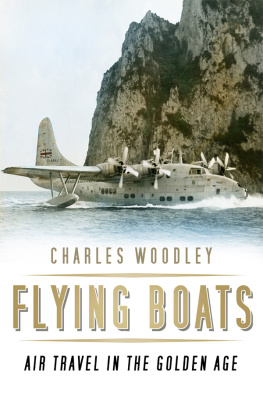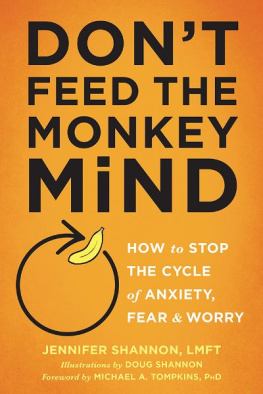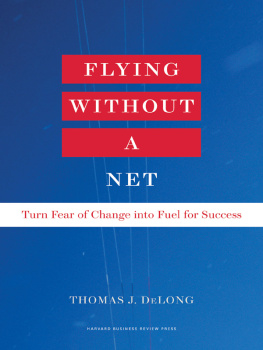Acknowledgments
No author can claim expertise in all of the areas covered in Flying Without Fear. I am particularly indebted to Captain Steve Fryer for his assistance with the technical aspects of the first edition. Captain Charles Bud Baldridge filled the same role in the preparation of this edition. Both Steve and Bud are now retired. American Airlines lost two of the best when they left the cockpit.
Tim Touchete began his career as a flight attendant with American Airlines. He now flies with Southwest Airlines. We were recently reminded of the importance of flight attendants to the safety of the passengers when US Airways flight 1549 landed in the freezing waters of the Hudson River. A skilled captain and a crew of well-schooled flight attendants saved every life on that plane. Tim knows safety, and when he spots a fearful flyer aboard one of his flights, he becomes a cheerleader, hand-holder, and dispenser of sage advice. His thoughts regarding this book are much appreciated.
Thanks also go to Sheryl Pacelli, a formal fearful flyer, who took the first step away from the oppression of fear a few years ago and still flies with confidence. This book was written with the goal of freeing others from their debilitating fear of flying.
The editorial staff of New Harbinger deserves much credit for the final product, and my heartfelt thanks go out to them.
Finally, my wife conquered her fear over twenty years ago and was so amazed by the changes it brought about in her life that she immediately set out to establish a fearful flyer program. The American Airlines AAirBorn program came about because of her efforts. Thousands of fearful flyers have benefited as a result. This book is based on the curriculum used in that course.
Duane Brown, Ph.D., is a professor emeritus at the University of North Carolina, Chapel Hill, where he taught for twenty-five years. Now retired from private practice, Brown has published twenty-five books and more than one hundred articles and book chapters. He also acted as lead trainer for the American Airlines AAir Born Program, where he led dozens of fear-of-flying seminars.
Chapter 1
Flying After 9/11
On September 11, 2001, the world as we knew it in the United States changed forever. At 8:46 a.m. (EDT), hijacked American Airlines Flight 11 was flown into the North Tower of the World Trade Center in New York City. Minutes later, United Airlines Flight 175 flew a similar trajectory into the South Tower of the World Trade Center. Less than an hour after the second attack on the World Trade Center, American Airlines Flight 77 crashed into the Pentagon in Arlington, Virginia. The fourth hijacked flight, United Flight 93, which was destined for either the White House or the Capitol Building in Washington, DC, crashed into an open field near Shanksville, Pennsylvania, thanks to the bravery of its passengers.
Nearly three thousand people died on September 11, 2001, and people who were unafraid of air travel, nervous fliers, and those already convinced that air travel was unsafe asked how this could happen. These same people now ask, Could it happen again? This is a valid question, one that cannot be answered with a yes or no. Ill simply say at this point that the answer is probably not, and as time passes, the likelihood will lessen. Good things are in the works. I have faith in the U.S. airline industry and the men and women who fly and repair the planes, serve the passengers, and work to maintain order and safety on the ground.
In the late 1980s and early 1990s, my wife, Sandra, and I headed the American Airlinessponsored program AAirBorn, which was designed to help fearful fliers overcome their fear. I also saw several people in a part-time private practice while I was a professor at the University of North Carolina at Chapel Hill. More than three thousand people enrolled in the AAirBorn program, and about 85 percent of them received the help they needed. Perhaps more importantly, I was on dozens of flights, sat in on numerous safety briefings, and visited the American Airlines maintenance facility in Tulsa, Oklahoma, where its planes are totally disassembled and refitted as one step in a rigorous maintenance process. I was, as I am now, confident that flying is the safest form of travel. (Support for this claim is provided in chapter 10.)
I was right about the relative safety of air travel and I produced the statistics to prove it in my 1996 book Flying Without Fear. However, I was nave because I didnt incorporate some of the facts that I learned inadvertently into my perspective about air travel. I should have known that some of the incidents I observed could have implications for the aircraft safety. For example, we often conducted fearful flier seminars in New Yorks LaGuardia Airport. It was not uncommon to find homeless people in secure areas, supposedly accessible only to airline personnel. It never occurred to me that one of those homeless people might plant a bomb in the terminal or infiltrate and hijack an aircraft. When I visited San Diego International Airport, which had the most vigilant security system that I encountered, I learned that a person had been able to climb a chain-link fence surrounding the airport, find a nook on the outside of a plane (probably a wheel well), and take a successful flight. What if that person had been a suicide bomber?
Terrorism was far from my thoughts until September 11, 2001. Metal detectors were in use in New Yorks LaGuardia Airport, but I learned that they were not as sensitive to the presence of metal as were the metal detectors in Canada. When I flew a return flight with a group of fearful fliers from Montreal to New York, many people in our group found themselves having to remove jewelry, shoes and belts that had metal buckles, and other items that had not been picked up by metal detectors in the United States. Clearly the metal detectors used at Bostons Logan Airport on September 11, 2001, were not sensitive enough to pick up the minuscule metal portion of a box cutter. I also knew that, for the most part, passengers luggage went uninspected unless they were entering the country or traveling to Israel. When the issue of luggage inspection arose, the main concern seemed to be detecting drugs and identifying illegal purchases that required duty payments, not locating contraband such as explosives. That has changed, as will be shown in chapter 7.
No one that I talked to about safety seemed to realize that a 9/11-type of attack was possible. I was among that group. I was most concerned about the possibility of a bomb being placed aboard an airline in passenger luggage and I made numerous inquiries about this possibility. In 1988, Pan Am Flight 103 was blasted out of the skies over Lockerbie, Scotland, by a bomb. Two hundred and seventy people died. In the late 1980s and the early 1990s, some luggage was x-rayed, but there seemed to be no sense of urgency among airline officials, airport operators, or the Federal Aviation Administration (FAA), the agency that oversees the airline industry. I will say that there was one group that was concerned about the bomb threat: the pilots. Admittedly my sample was limited to a dozen American Airline pilots that I worked with in the AAirBorn program, but they realized that bombs were a real threat to the airplanes they were flying.
The four airliners that crashed because of terrorist attacks on September 11, 2001, eliminated the navet about air travel forever. The resulting changes have not made air travel perfectly safe. If you are seeking an unequivocally safe means of transportation, I have one bit of advice for you: stay home! Actually that may not work either. Nearly a dozen people in the Lockerbie, Scotland, area were killed by falling debris when the 747 was blown apart. In the November 12, 2001, crash of American Airlines Flight 587 in New York City, five people were killed on the ground.

